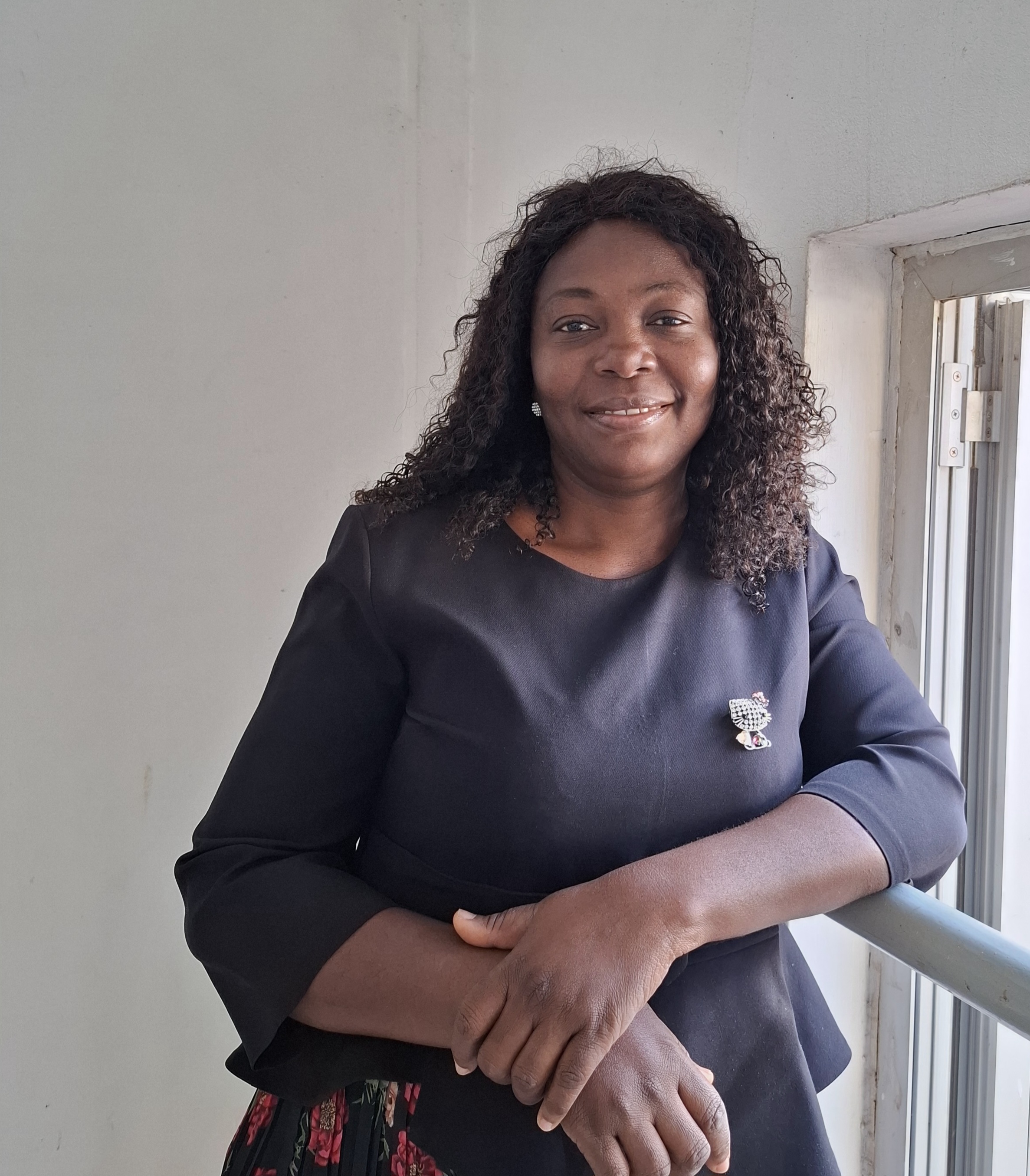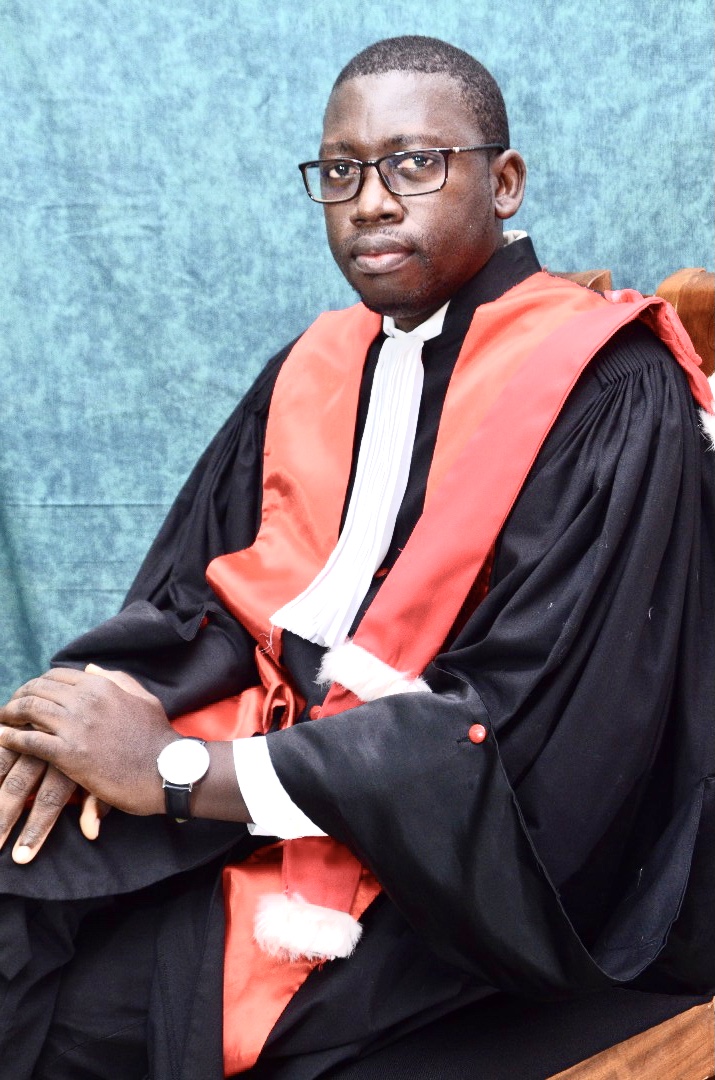Case Report
The Use of Artificial Skin (Alloderm®) in the Treatment of Congenital Primary Lymphedema with Severe Skin Necrosis in A Pediatric Patient: A Rare Clinical Case Report
- Richmond Ronald Gomes *
- Le Khanh Linh
Plastic and Orthopedic Center, Hue Central Hospital, Hue, Vietnam.
*Corresponding Author: Richmond Ronald Gomes ,Plastic and Orthopedic Center, Hue Central Hospital, Hue, Vietnam.
Citation: Gomes. R. R. T, Linh. L.K. (2025). The Use of Artificial Skin (Alloderm®) In the Treatment of Congenital Primary Lymphedema with Severe Skin Necrosis in A Pediatric Patient: A Rare Clinical Case Report, International Journal of Medical Case Reports and Reviews, BioRes Scientia Publishers. 5(2):1-7. DOI: 10.59657/2837-8172.brs.25.077
Copyright: © 2025 Richmond Ronald Gomes, this is an open-access article distributed under the terms of the Creative Commons Attribution License, which permits unrestricted use, distribution, and reproduction in any medium, provided the original author and source are credited.
Received: February 11, 2025 | Accepted: February 28, 2025 | Published: March 15, 2025
Abstract
Objective: Severe skin necrosis in neonatal primary congenital lymphedema (PCL) is exceptionally rare and poses significant treatment challenges. This article presents a first-of-its-kind case involving the use of artificial skin (AlloDerm®), an acellular dermal matrix was successfully used in treating primary congenital lymphedema in an infant, with a particular focus on managing severe skin necrosis complications, offering a novel reconstructive solution for complex neonatal lymphedema cases.
Background: PCL is a genetic disorder that impairs lymphatic function, leading to progressive swelling and, in rare cases, devastating skin necrosis. Conventional treatments, including compression therapy and surgical debridement, often fail in severe cases due to limited autologous skin grafting options in neonates. This case explores an innovative approach, demonstrating the first reported use of AlloDerm® in treating neonatal lymphedema with extensive skin loss.
Method: A neonatal patient with progressive lymphedema and severe soft tissue necrosis underwent debridement followed by the application of AlloDerm® grafts. The treatment aimed to prevent further deterioration, enhance wound healing, and restore skin integrity. The patient’s progress was monitored over 12 months for functional outcomes assessing edema reduction, tissue viability, and overall functional recovery.
Results: Following treatment, the use of AlloDerm® led to significant clinical improvements: accelerated wound healing; restored skin integrity and preventing further necrosis. Over a 12-month follow-up, the patient showed no recurrence of necrosis or major complications, indicating the long-term viability of this approach.
Conclusion: Treatment with AlloDerm® artificial skin has proven effective in managing severe complications of primary limb lymphedema, especially in cases of severe skin necrosis. This case provides the first documented evidence that AlloDerm® can serve as a life-saving reconstructive option for neonatal lymphedema with severe skin loss—bridging the gap where traditional treatments fail. The success of this approach suggests that biocompatible tissue matrices may revolutionize pediatric lymphedema management. However, Further studies with larger cohorts and long-term follow-up are needed to validate its efficacy and establish standardized treatment protocols.
Keywords: primary congenital lymphedema; pediatric lymphedema; alloderm®; artificial skin graft; lymphatic disorders; neonatal skin necrosis; regenerative medicine; lymphedema management
Introduction
Primary congenital lymphedema (PCL) is a rare genetic disorder characterized by lymphatic dysfunction, leading to chronic limb swelling due to protein-rich fluid accumulation in the interstitial space [1,2]. Although typically managed with compression therapy, physical rehabilitation, and microsurgery, severe cases with extensive skin necrosis present unique treatment challenges. Management of PCL includes conservative therapy (compression, manual drainage, antibiotics) and surgical interventions such as lymphovenous anastomosis (LVA) and vascularized lymph node transfer (VLNT) [3-5].
Traditional skin grafting may not be feasible in neonates due to limited donor skin availability, necessitating innovative approaches. AlloDerm®, an acellular dermal matrix, has emerged as a promising alternative in reconstructive surgery due to its biocompatibility, ability to integrate with host tissue, and reduced risk of rejection. However, its application in neonatal PCL complicated by severe skin necrosis remains largely unexplored. Here, we present a rare case of a neonate with extensive skin necrosis secondary to PCL, successfully treated with AlloDerm® grafting following conventional debridement. This case highlights the potential of AlloDerm® as a novel reconstructive solution in severe neonatal lymphedema.
Definition and Pathogenesis
Lymphedema is the accumulation of protein-rich fluid in the subcutaneous tissues due to impaired lymphatic function. This disruption leads to fluid retention in the interstitial tissues, causing swelling. Lymphedema can be categorized into two main types:
Primary Congenital Lymphedema (PCL): Results from abnormal development of the lymphatic system due to genetic factors without any identified external cause. Primary congenital lymphedema is further classified into three stages based on the time of onset: Early Stage: Appears at birth; Intermediate Stage (Praecox): Lymphedema manifests during childhood and Late Stage: Tarda lymphedema occurs in adulthood.
Secondary Lymphedema: Caused by external factors such as cancer, cancer treatment (surgery and/or radiation), infections, inflammatory disorders, obesity, and other genetic syndromes. Secondary lymphedema results from blockages in the lymphatic vessels or nodes, often due to fibrosis or other complications, and can coexist with lymphatic obstructions and valve dysfunction.
Clinical Presentation and Associated Syndromes
Various genetic loci are linked to PCL, notably the vascular endothelial growth factor receptor-3 (VEGFR3) gene, located on the long arm of chromosome 5 (5q34-5q35). This receptor is expressed in the endothelium of lymphatic tissues. Mutations disrupting the tyrosine kinase signaling function of VEGFR-3 are believed to lead to PCL, causing lymphatic and tissue fluid accumulation. PCL can be associated with several syndromes, including Noonan, Turner, yellow nail syndrome, and lymphedema-distichiasis syndrome.
Milroy Syndrome: A hereditary form of primary lymphedema, typically presenting immediately after birth, characterized by unilateral lower limb swelling, hydrocele, upturned toenails, and warty papules.
Lymphedema-distichiasis Syndrome: Involves the presence of extra eyelashes (distichiasis) from birth, which often do not grow along the eyelid margins but instead emerge from the inner lining, causing corneal damage, reduced vision, or scarring. Patients may also experience varicose veins and ptosis.
Other syndromes related to lymphedema include chorio-retinal dysplasia, mental retardation, and microcephaly, often associated with gene mutations such as KIF11.
Diagnosis and Differentiation
Ninety percent of primary lymphedema cases can be diagnosed through medical history and clinical examination. Patients are questioned about family history of limb swelling and infections. The disease almost always affects the distal limbs, and the Stemmer sign has 92% sensitivity and 57% specificity for this condition. In clinical terms, the severity of lymphedema is categorized as mild (less than 20% limb volume increase), moderate (20–40% limb volume increase), or severe (over 40% limb volume increase).
Lymphoscintigraphy is the definitive diagnostic test for lymphedema, with 100% specificity and 96% sensitivity. A radiolabeled colloid is injected into the dorsum of the hand or foot, absorbed only by the lymphatic vessels. Delayed transport to the lymph nodes, retrograde flow of the skin, and compensatory lymphatic channels indicates abnormal lymphatic function.
Primary lymphedema is often misdiagnosed with other conditions, with approximately one-quarter of patients diagnosed with "lymphedema" actually suffering from different pathologies. Differential diagnoses include vascular abnormalities, overgrowth syndromes, venous stasis, systemic conditions (cardiac, hepatic, renal, and autoimmune), orthopedic and rheumatic disorders, lipedema, and obesity.
Treatment of Lymphedema
Conservative Methods
Compression Therapy: Using compression bandages or stockings to reduce swelling by supporting lymphatic flow.
Exercise and Physical Therapy: Exercises and movements help promote lymphatic circulation.
Manual Lymphatic Drainage (MLD): A gentle massage technique to stimulate lymphatic flow.
Skin Care and Infection Control: Proper skin care and avoiding open wounds to prevent infections.
Surgical Interventions
Lymphatic-Venous Anastomosis (LVA): The most common method for treating lower limb lymphedema, involving the anastomosis of distal lymphatic vessels (ranging from 0.3 to 0.8 mm in size) with proximal veins. Indocyanine green (ICG) lymphography is used to precisely identify functional lymphatic vessels.
Vascularized Lymph Node Transfer (VLNT): Involves transferring functional lymph nodes with microvascular anastomosis to restore natural lymphatic flow. This method is indicated for moderate to severe lymphedema cases unresponsive to conservative therapy and lacking functional lymphatic vessels.
Suction-Assisted Lipectomy (Liposuction): A minimally invasive treatment, particularly effective for chronic lymphedema patients. This procedure may be used as an adjunct to physiological treatments like LVA or VLNT.
Skin Grafting Post-Debridement: Performed in severe lymphedema cases with significant excess skin or in genital lymphedema cases. However, autologous skin grafting is limited in neonates due to:
• Small body surface area restricting donor skin sites
• Increased surgical morbidity
• Higher rejection risks due to immature immune response
Radical Reduction of Lymphedema with Perforator Preservation (RRPP): A novel approach combining traditional excision techniques with microvascular dissection principles to thoroughly remove lymphedema tissue while preserving blood supply to the overlying skin.
Emerging Techniques and Challenges in Treatment
These techniques aim to improve lymphatic flow and are often indicated in the early stages of lymphedema before significant fibrofatty tissue develops. However, microsurgical procedures for primary lymphedema are less well-defined as patients often have hypoplastic or absent lymphatic vessels. Such patients also face a high risk of developing lymphedema at the VLNT donor site due to genetic mutations affecting their lymphatic system, and they may be prone to developing lymphedema in other anatomical regions.
As new pathogenic mutations are identified and our understanding of these variants improves, targeted therapies may prove effective in preventing the onset of lymphedema. For example, drugs may block abnormal signaling pathways or stimulate lymph angiogenesis.
Technological advancements like AlloDerm® and pharmacological therapies applied topically, injected, or used systematically can offer benefits in managing severe complications. This is particularly important in controlling severe complications such as skin necrosis in neonatal patients. The use of artificial skin (AlloDerm®) in treating patients is a crucial aspect of reconstructive and regenerative surgery.
Updates from the Lymphedema Treatment Act (LTA)
On January 1, 2024, the Lymphedema Treatment Act (LTA) came into effect in the United States, marking a significant step in providing insurance coverage for compression devices, an essential part of lymphedema treatment and management.
Insurance Coverage for Compression Devices: Medicare now covers standard and custom compression devices, including daytime and nighttime compression garments, bandaging systems, and other supportive accessories, ensuring patients can access the necessary equipment to manage their condition.
Requirements for Diagnosis and Prescription: Patients need a diagnosis of lymphedema and a prescription for compression garments from a specialist to benefit from LTA. This ensures that only patients with legitimate need can access these services.
Comprehensive Management: LTA not only covers compression garments but also encourages other comprehensive management measures like manual lymphatic drainage therapy and surgical interventions when necessary to prevent complications and improve patients’ quality of life.
Clinical Case Report
Patient Information
The patient, Tran Thi S…, born on May 2, 2023, weighed 31 kg at birth. Upon hospital admission on May 19, 2023, the patient’s weight was 45 kg. The patient was diagnosed with vascular malformations in the left leg via prenatal ultrasound at 21 weeks of gestation. After birth, the patient was diagnosed with PCL of the left lower limb, accompanied by severe complications, including coagulopathy and Kasabach-Merritt syndrome (Figure 1).
Figure 1: Lymphedema in the left leg on the 17th day after birth
Figure 2: Soft tissue skin necrosis on the 21st day after birth
Clinical Condition at Hospital Admission
Neurological: The patient was alert and responsive, with normal muscle tone and slightly reduced startle reflex.
Temperature: The patient had a fever, with temperatures ranging from 38.5°C to 39°C.
Respiratory: The patient was breathing rapidly with mild effort and required oxygen support.
Circulatory: The patient’s skin displayed slight mottling, with a clear radial pulse of 140 beats per minute and capillary refill time under 3 seconds.
Digestive: The patient had stable digestive function.
Infection: The patient exhibited signs of infection (Figure 2), with elevated infection markers and low platelet count. Treatment included discontinuation of Vancomycin, increased doses of Meropenem, and the addition of Linezolid and Ciprofloxacin antibiotics.
Complications: The patient had vascular malformations in the left leg, with blisters forming on a necrotic hemorrhagic base.
Diagnosis
Primary congenital lymphedema complicated by extensive skin and soft tissue necrosis in the left lower limb. (Monitoring for Kasabach-Merritt syndrome and late-onset neonatal infection)
Treatment Process
June 2, 2023: The patient underwent a debulking procedure to reduce pressure on the lymphedematous lower limb (Figure 3).
Figure 3: Debridement of necrotic skin and soft tissue around the limb
June 5, 2023: The patient continued to receive routine wound care and dressing changes (Figure 4).
Figure 4: Limb appearance after multiple dressing changes
Figure 5: Coverage of the defect area with a regenerative tissue matrix
June 13 to June 29, 2023: The patient continued to be monitored and treated, including full-thickness skin grafting (FTSG) from the groin area to improve the damaged area (Figure 6).
Figure 6: Augmented Full-Thickness Skin Graft
Post-operative follow-up
After 2, 4 months and 12 months, the patient’s condition was monitored and recorded significant improvements in lymphedema and skin wounds (Figure 7):
• Day 7: Initial healing, reduced swelling
• 1 month: 80% skin integration, no infection
• 4 months: Full-thickness healing, lymphatic function improved.
• 12 months: No recurrence of necrosis or major complications.
The treatment process helped control dangerous complications, including preventing skin necrosis and supporting tissue recovery in the affected area. The use of regenerative tissue and supplementary surgical measures brought positive outcomes for the patient, improving quality of life and reducing long-term complications.
Figure 7: Follow-up after 4 months (A) and 12 months (B)
Discussion
AlloDerm® is an artificial skin made from processed human dermis, which has been treated to remove cells while preserving the necessary structural proteins. This makes AlloDerm a highly biocompatible material with the patient’s body, reducing the risk of graft rejection and stimulating natural tissue regeneration that has been widely used in reconstructive surgery, including breast reconstruction, burn treatment, and abdominal wall repair [6-8]. In the pediatric patient in this report, the available skin area for grafting was limited due to the small body size. In cases where extensive skin and soft tissue debridement is necessary due to necrosis, the remaining autologous skin may be insufficient for grafting, increasing the risk of complications and prolonging treatment time. Therefore, the use of AlloDerm in this case is reasonable and should be considered based on the following factors:
Properties of AlloDerm: AlloDerm provides an effective alternative in skin and soft tissue regeneration, especially in cases where large graft areas are needed but autologous skin is insufficient. With its non-immunogenic properties and ability to support natural tissue regeneration, AlloDerm can be used to fill large tissue gaps, facilitating the growth of new tissue without requiring additional grafts from the patient’s body.
Safety and Efficacy: The use of AlloDerm has been proven safe and effective in numerous clinical studies, including pediatric cases. This makes AlloDerm a reliable option when autologous skin grafting is not feasible, preserving autologous skin sources for future interventions if needed.
Minimizing Complication Risks: When insufficient autologous skin is available, using AlloDerm helps minimize the risk of complications related to harvesting skin from healthy areas, such as large scars or impacts on other body functions. This is particularly important in pediatric patients, where growth and aesthetics can be significantly affected by large scars or prolonged skin damage.
Reducing Treatment and Recovery Time: AlloDerm shortens treatment and recovery time by providing a ready foundation for new tissue growth, reducing the need for additional autologous skin grafting surgeries, and enabling faster recovery for pediatric patients.
In this particular case, the pediatric patient not only suffered from congenital lymphedema but also had severe skin necrosis, a rare and dangerous complication. The use of AlloDerm® in this case was not only a treatment option but also an advanced solution for managing complex tissue damage, optimizing treatment outcomes. By using this artificial skin, surgeons can overcome the limitations of autologous skin sources and optimize the tissue regeneration process while minimizing risks and improving the patient’s quality of life after surgery. Moreover, choosing AlloDerm® instead of autologous graft materials also demonstrates the advantage in reducing graft rejection complications, especially in cases requiring extensive skin grafting.
Compared with previous studies, the results of this clinical case align with what has been reported in the literature, showing that AlloDerm® is not only effective but also helps improve the quality of life for patients. Studies have shown that acellular dermal matrices, including AlloDerm®, provide a viable scaffold for neonatal wound healing by promoting vascularization and fibroblast migration [9,10]. Studies such as those by Sudduth and Greene (2022) have shown that AlloDerm® is not only safe but can also enhance tissue recovery, especially in cases of extensive tissue damage [11]. Another study by Schaverien et al. (2018) also recorded the positive effects of AlloDerm® in supporting tissue regeneration in patients with severe soft tissue injuries [4].
However, despite its benefits, the use of AlloDerm must be carefully considered, especially regarding cost and availability. Additionally, AlloDerm is not always the optimal choice for every case, and thorough evaluation by medical professionals is necessary.
Conclusion
This clinical case demonstrates the feasibility and effectiveness of using artificial skin (AlloDerm®) in treating primary congenital lymphedema, particularly when the disease is accompanied by severe skin necrosis. Through the application of advanced treatment methods, including both surgical and conservative therapies, we achieved significant improvements in the patient’s condition while preventing the progression of dangerous complications.
The treatment of primary congenital lymphedema in neonates requires close collaboration between specialties and the use of comprehensive treatment measures. The success of this case not only provides evidence for the effectiveness of AlloDerm® but also opens up new approaches in managing severe complications caused by this disease. Recommendations from this clinical case include continued research and application of AlloDerm® in similar situations, especially in pediatric patients with similar conditions. Additionally, to confirm the superiority of this method, further clinical studies with larger samples and long-term follow-up are needed. This report contributes to the current clinical database and encourages further research on the application of new technologies in treating lymphedema, particularly in children, to improve quality of life and long-term prognosis for patients.
References
- Connell F, Brice G, Jeffery S, Keeley V, Mortimer P, Mansour S. (2010). A new classification system for primary lymphatic dysplasias based on phenotype. Clin Genet, 77(5):438-52.
Publisher | Google Scholor - Brouillard P, Boon L, Vikkula M. (2014). Genetics of lymphatic anomalies. J Clin Invest, 124(3):898-904.
Publisher | Google Scholor - Campisi C, Boccardo F, Tacchella M. (2003). Evolution of microsurgical techniques for lymphedema treatment. Microsurgery, 23(2):131-8.
Publisher | Google Scholor - Schaverien MV, Badash I, Patel KM, Selber JC, Cheng MH. (2018). Vascularized lymph node transfer for lymphedema. Semin Plast Surg, 2(1):28-35.
Publisher | Google Scholor - Ozaslan C, Kuru B. (2004). Lymphedema after treatment of breast cancer. Am J Surg, 187(1):69-72.
Publisher | Google Scholor - Greer SE, Rada EM, Agarwal JP, Jandali S, Brooks RM, Karp NS. (2013). Acellular dermal matrix in breast reconstruction: safety and outcomes. Ann Plast Surg, 70(5):587-90.
Publisher | Google Scholor - Friedman CD, Costantino PD, Takashima M, Chow L. (1998). The use of processed allograft dermal matrix for intraoral resurfacing: An alternative to split-thickness skin grafts. JAMA Otolaryngol Head Neck Surg, 124(1):73-8.
Publisher | Google Scholor - Suh H, Hong JP. (2011). One-stage allogenic acellular dermal matrix (ADM) and split-thickness skin graft with negative pressure wound therapy. In: Suh H, Hong JP, editors. Skin grafts. Intech Open, 36-50.
Publisher | Google Scholor - Shuck J, Imai T, Johnson K, Young C, Ford HR. (2019). The use of acellular dermal matrices in pediatric wound care: a review of current applications. J Pediatr Surg, 54(5):985-91.
Publisher | Google Scholor - Singh P, Connell M. Primary congenital lymphedema complicated by hydrops fetalis: a case report and review of the literature. Case Rep Obstet Gynecol, 186173.
Publisher | Google Scholor - Sudduth CL, Greene AK. (2022). Primary Lymphedema: Update on Genetic Basis and Management. Adv Wound Care (New Rochelle),11(7):374-381.
Publisher | Google Scholor






















